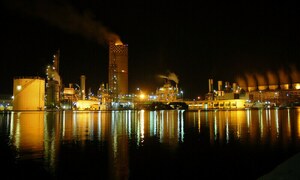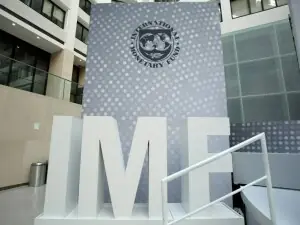The Independent Evaluation Department (IED) of Asian Development Bank (ADB) has rated "flood emergency reconstruction project" in Pakistan successful, relevant, effective and likely sustainable, but rated its national highways component less than efficient. Pakistan experienced one of its worst floods in July 2010, which had a devastating effect on its economy.
Transport and irrigation infrastructure were severely damaged in 80 districts spread across four provinces. A damage and needs assessment (DNA) report was prepared by the ADB and the World Bank in coordination with federal and provincial government agencies and other development partners.
ADB approved (i) a loan of $600 million from its ordinary capital resources, and (ii) another loan of SDR 31.7 million (equivalent to $50 million) from Asian Development Fund resources on 30 March 2011. The government of Pakistan was to contribute $72 million from its own resources to cover taxes, duties, and financing charges and to finance the land acquisition and resettlement costs. Both loans were expected to close on 30 September 2014. The first loan was extended once to close on 25 May 2015, but eventually closed on 8 August 2016 (a delay of 22 months), whereas the second one closed on 15 April 2015, a delay of 6.5 months.
The IED validation report released on Wednesday stated that the actual cost at completion was $571.5 compared to $722.0 million estimated at appraisal. The national highways component was estimated to cost $272.6 million with ADB share of $245.3 million and the government's share of $27.3 million. The actual loan was, however, $207.1 million and the amount financed by the government $31.7 million. Given the available loan funds and the increased cost estimates after the completion of detailed designs, the project scope had to be reduced. Even with the reduced scope, contracts could not be procured for all the prioritized roads and the unused loan amount ($77.1 million) was canceled.
The project had three output components. The first was the repair, rehabilitation, and reconstruction of 793 kilometers (km) of partially or completely damaged national highways; and 800 km of provincial roads in Sindh province. The scope of the national highways was finally reduced to 424 km due to the (i) increase in cost estimates after the completion of detailed designs, (ii) higher-than-expected bid prices, (iii) available loan funds, and (iv) time constraints. A total of 344 km of national highways were rehabilitated and reconstructed, which is 43 percent of the original target of 793 km, but this is already 81 percent of the revised target of 424 km.
The validation report of IED said that since the project scope had to be reduced due to higher cost estimates during implementation and to delays in procurement processes, it rated the highways component less than efficient. This validation agreed with the evaluation assessment. The midterm review mission noted that, in general, delays in procurement in the national highways component were due to (i) deficient bid evaluation reports, requiring multiple submissions to ADB for corrections; (ii) NHA's time-consuming, multi-tiered internal approval processes; (iii) inadequate staffing, capacity, and experience of NHA's procurement staff; and (iv) ADB lengthy internal processes.
It also pointed out that in the case of five contracts for international competitive bidding, it took more than six months from the date of advertisement to ADB concurrence on NHA's bid evaluation report, which is quite long for an emergency project. For national highways, the Project Completion Report (PCR) mentioned that the NHA finances the annual maintenance plan from a road maintenance account funded mainly by tolls paid by the highway users. However, it did not provide data on the amount of toll revenue collected as compared to the O&M needs and, hence, it is not clear if maintenance funds from toll revenue was sufficient to carry out adequate road maintenance. It did not discuss the government's future strategy in terms of preventive, routine maintenance, periodic repair, and asset preservation of the constructed road through controls on axel loads.
This validation assessed the project successful as did the PCR. It assessed the project relevant as it responded to the need for rehabilitation and reconstruction of flood-damaged infrastructure, adopted a build back better approach, and provided the necessary capacity strengthening required by the executing and implementing agencies. It rated the project effective considering that most of the outputs and outcomes targeted in the Design and Monitoring Framework (DMF) were achieved. The PCR rated the project overall efficient. The validation rated the project likely sustainable since the government made budget allocations for the maintenance of assets and rebuilt the infrastructure to better standards, thus, increasing resilience to future disasters.
The overall quality of the PCR is satisfactory. It discussed the key implementation issues affecting the project outcomes and was candid in assessing the effectiveness and implementation efficiencies of different project components. The second component of the project was improving 1.5 million hectares (ha) of flood-affected agricultural land by restoring, strengthening, and resectioning various flood protection embankments, and rehabilitating main canals, distributaries, minor canals, and drainage infrastructure in Sindh province.
The last component was on support services for the implementing agencies, provided by a capacity development technical assistance (CDTA), to ensure procurement, safeguard compliance, and implementation of the gender action framework, which required that at least 15 percent of water structures have gender features in their design and implementation.
The borrower's compliance with covenants was satisfactory with all 62 of the 63 loan covenants complied with, three of them partly. Compliance to one covenant requiring post-completion audit was not yet known since the loan account was not yet closed when the PCR was prepared. Another covenant relating to the disclosure of project information on a website was partially complied with since the websites did not show the financial statements. No loan covenant was modified, suspended, or waived.
The design followed the priorities identified in the DNA and the flood reconstruction plan prepared by the Pakistan Planning commission. Since the damage assessment was done when the infrastructure was still submerged, detailed designs for the works were required during the implementation phase. The PCR assessed both the Sindh provincial roads and irrigation components highly effective in achieving the stated project's outcomes. It noted that 920 km of roads were repaired or reconstructed, which was 15 percent higher than the appraisal target. It also noted that the truck traffic increased by 141 percent from the time of design (though the source of this data is not stated). Under the irrigation component, 103 flood embankments measuring 1,453 km were rehabilitated, reconstructed, and strengthened compared to the target of 81 flood embankments measuring 1,000 km.
Canal carrying capacity of 41.2 billion m3 was restored. However, there is no target to compare this with as there was an error in setting the target volume of 59 million m3, which is lowered by three orders of magnitude. The impact indicator of restoring agricultural production to pre-flood levels was overall achieved. By the end of 2015, wheat output was 3.0 million tons compared to 3.7 during 2009-2010 while cotton output was lower at 2.8 million tons compared to 4.2 in the base year. However, sugarcane output was at 17.6 million tons compared to 13.5 at the production baseline and rice output was 2.45 million tons compared to 2.42 in the base year.
BR100
16,405
Increased By
92.5 (0.57%)
BR30
52,938
Increased By
579.1 (1.11%)
KSE100
158,781
Increased By
743.5 (0.47%)
KSE30
48,500
Increased By
249 (0.52%)





















Comments
Comments are closed.